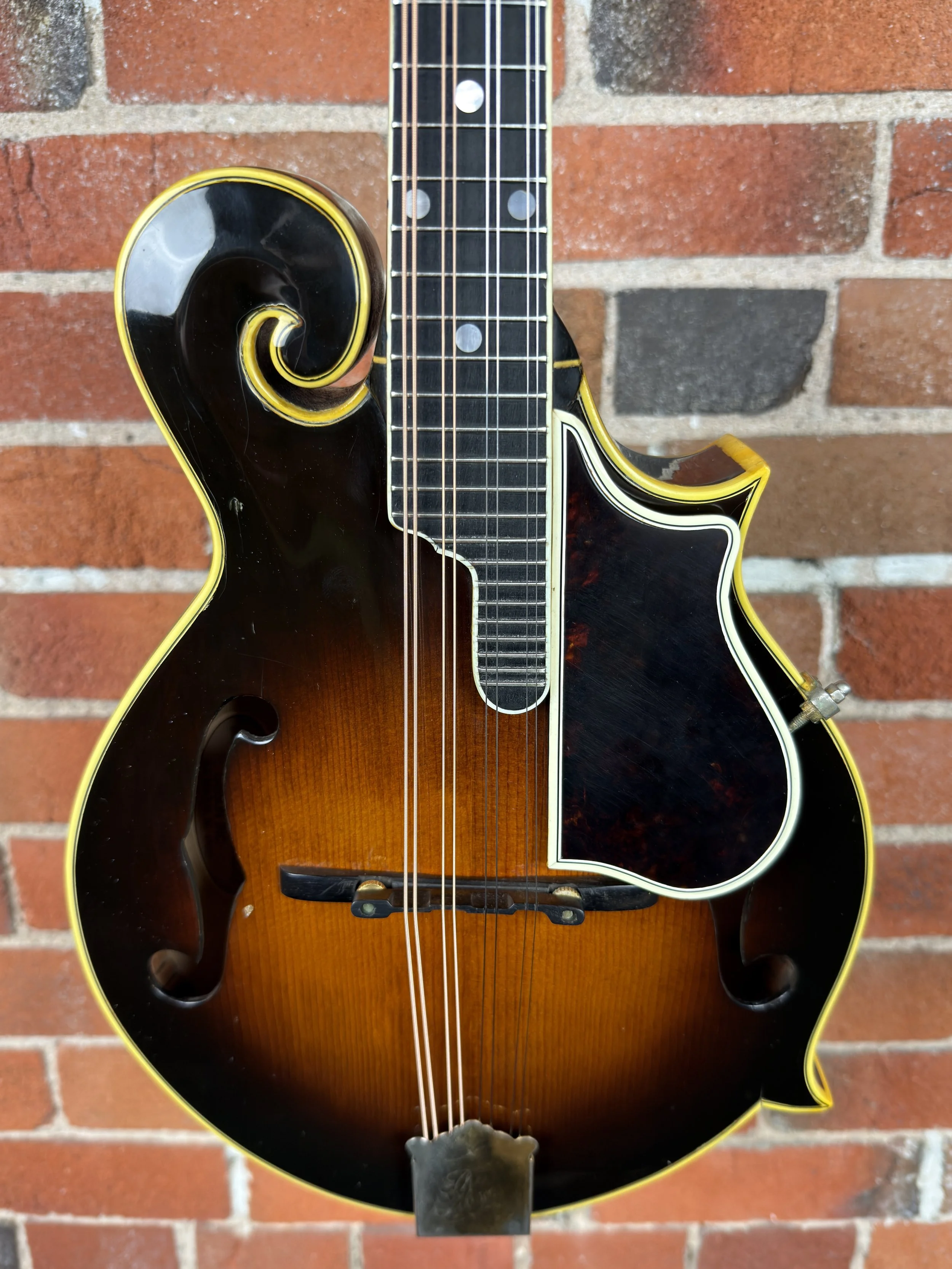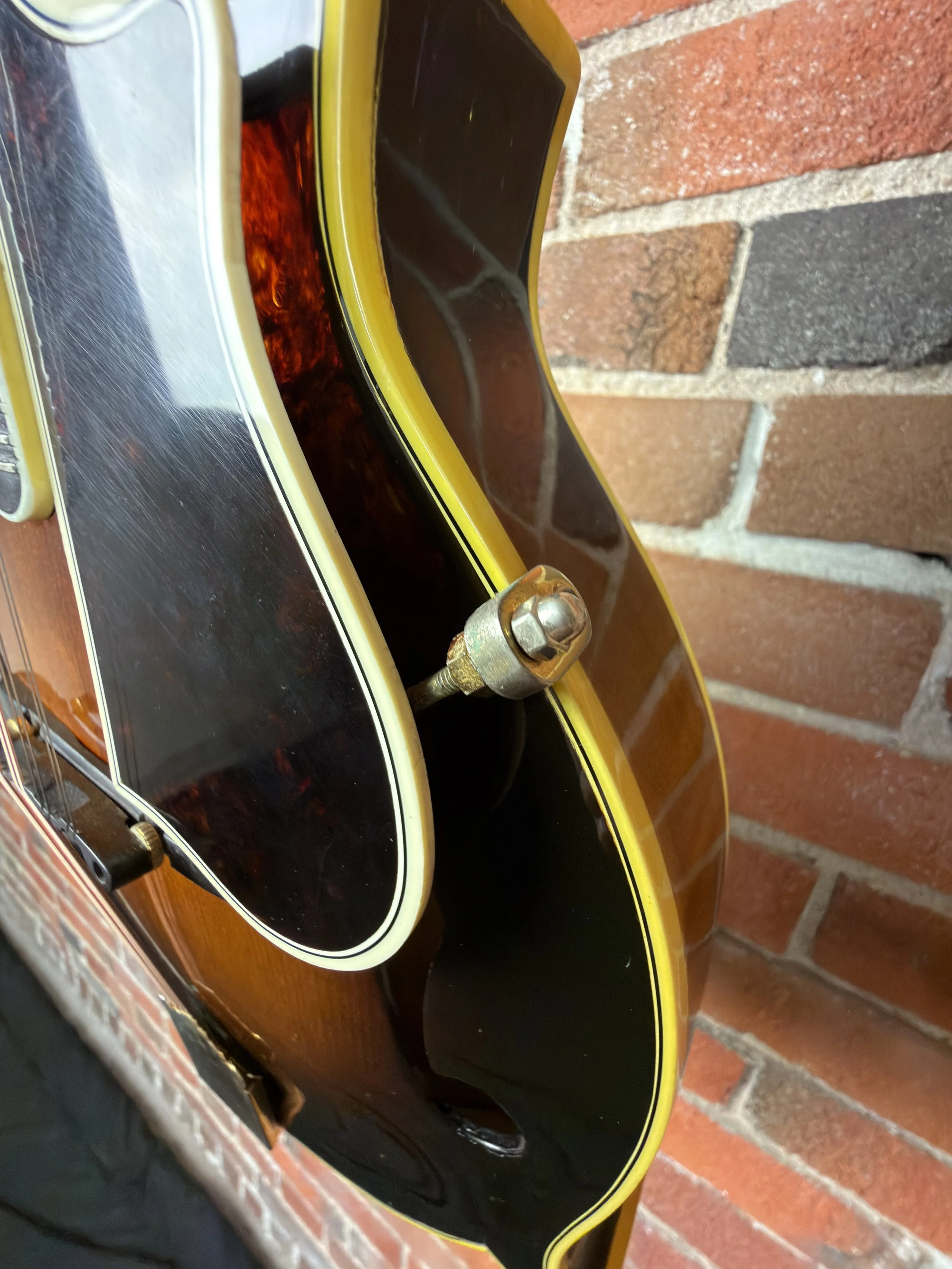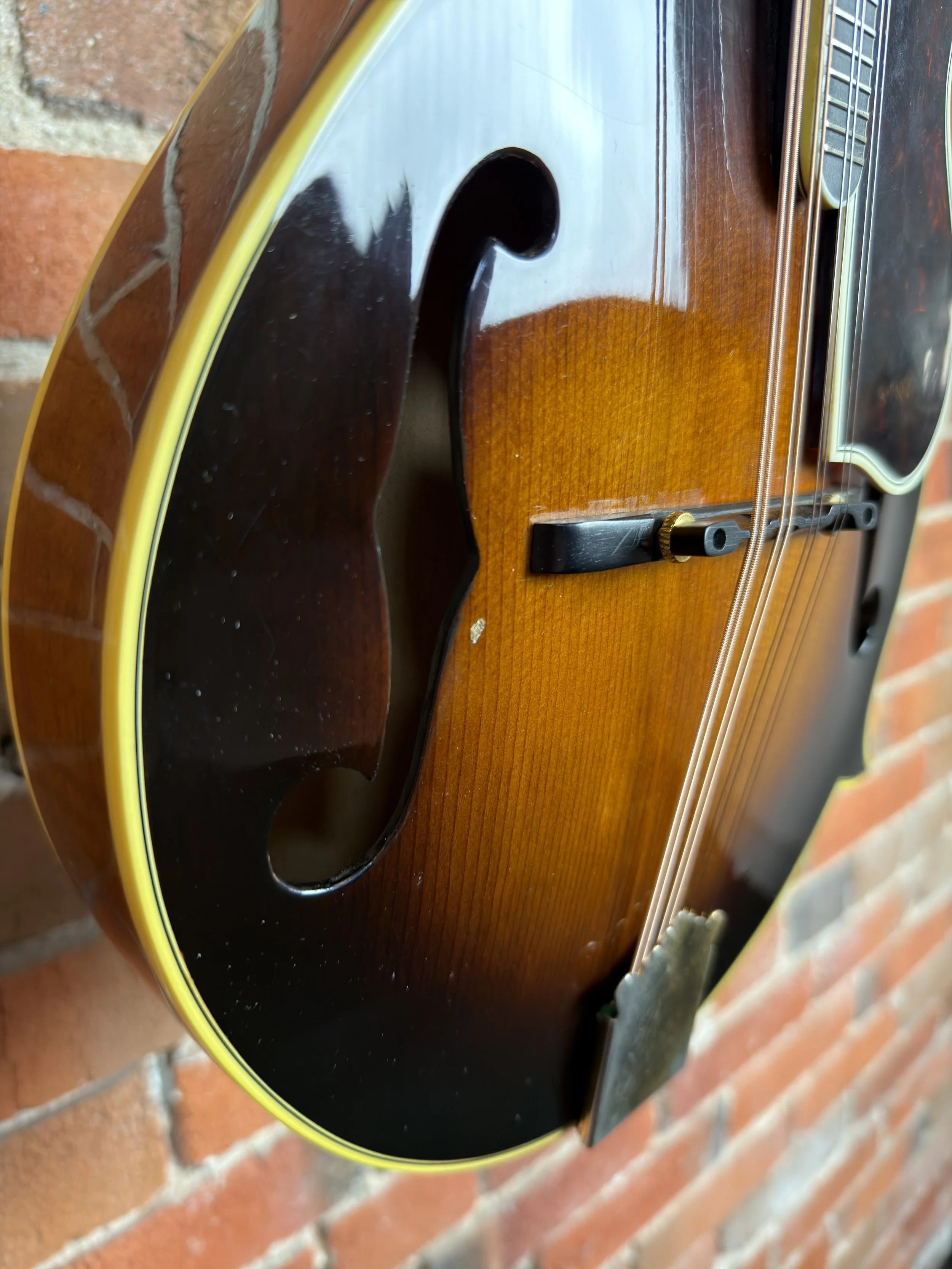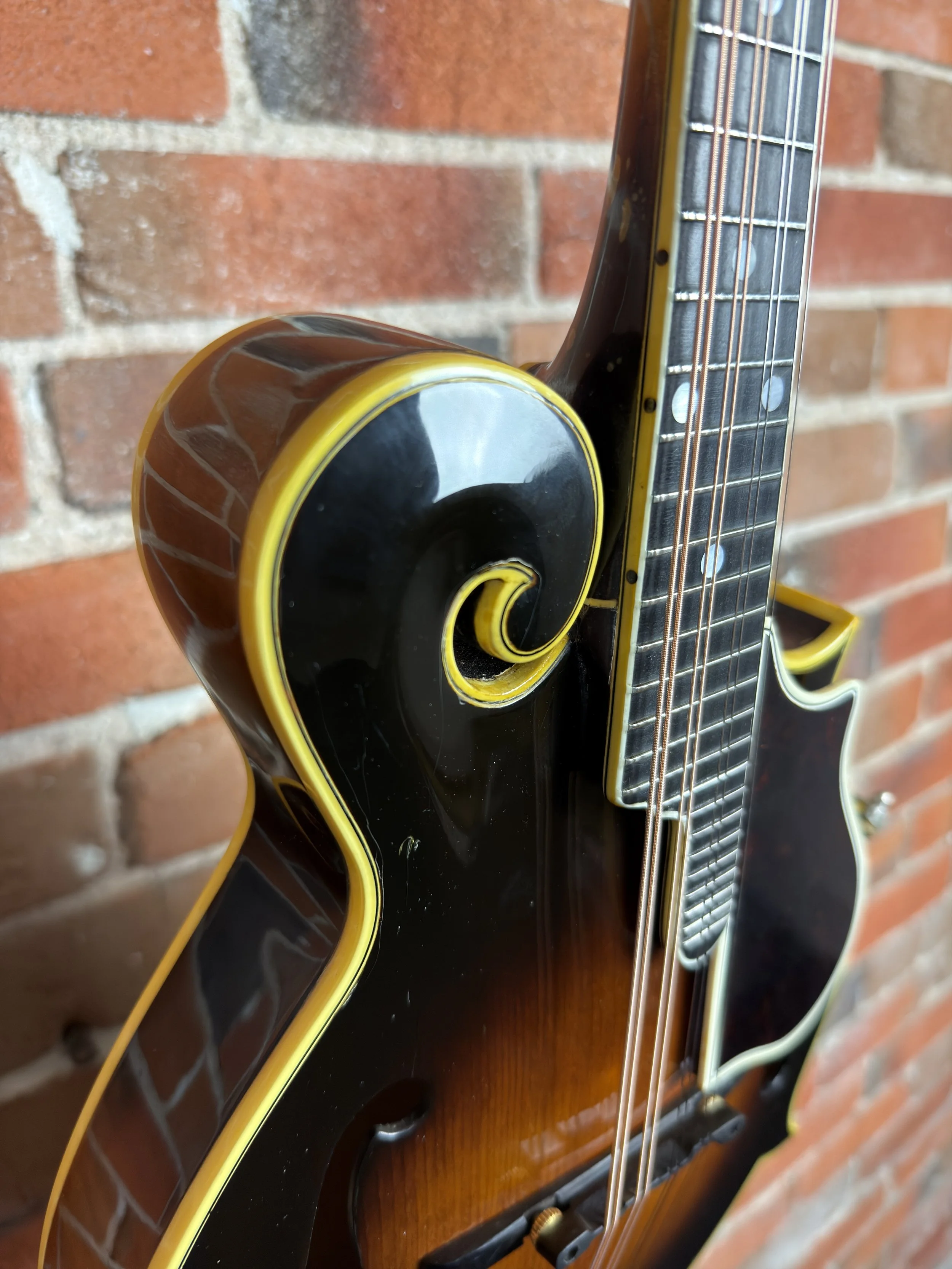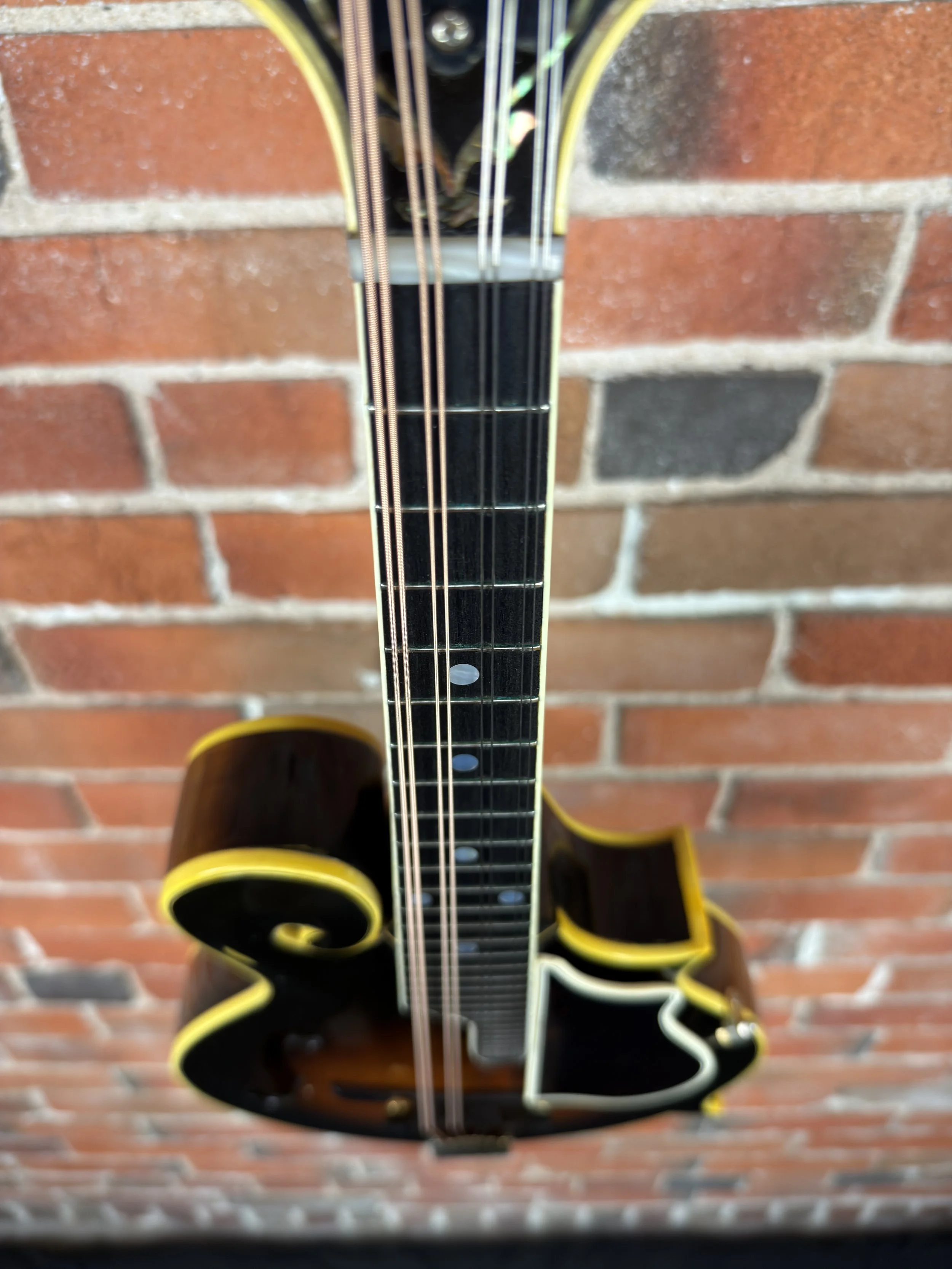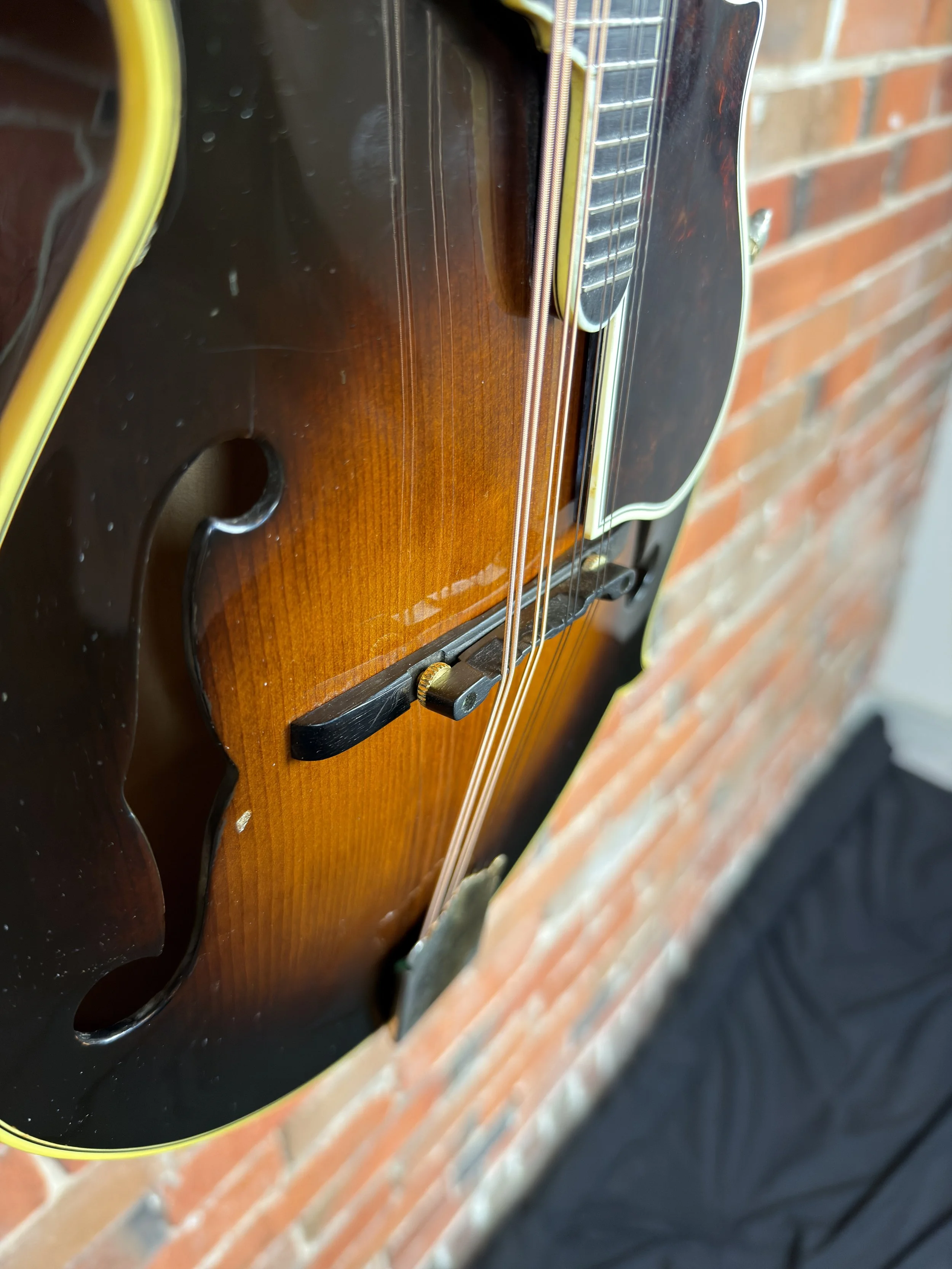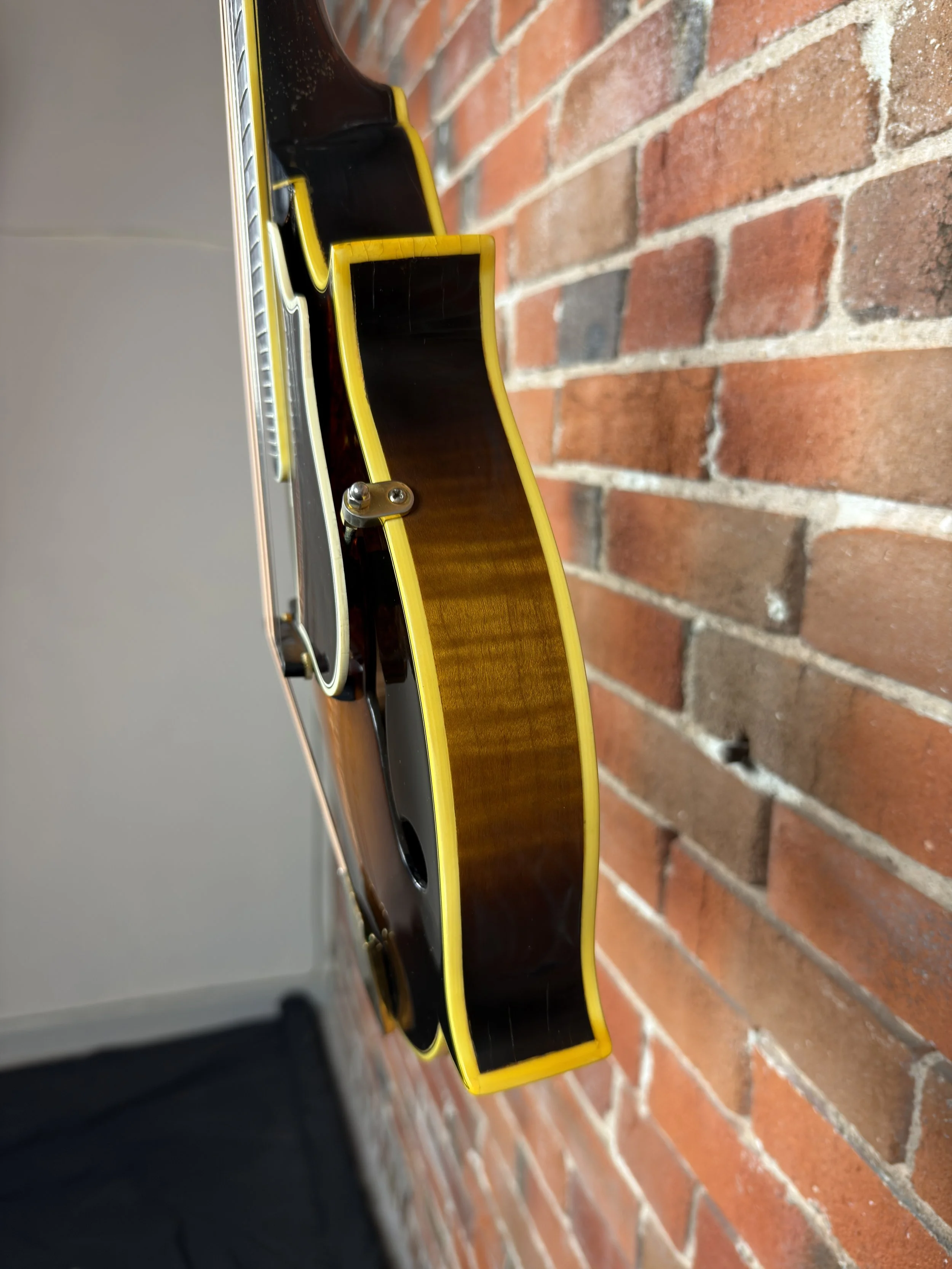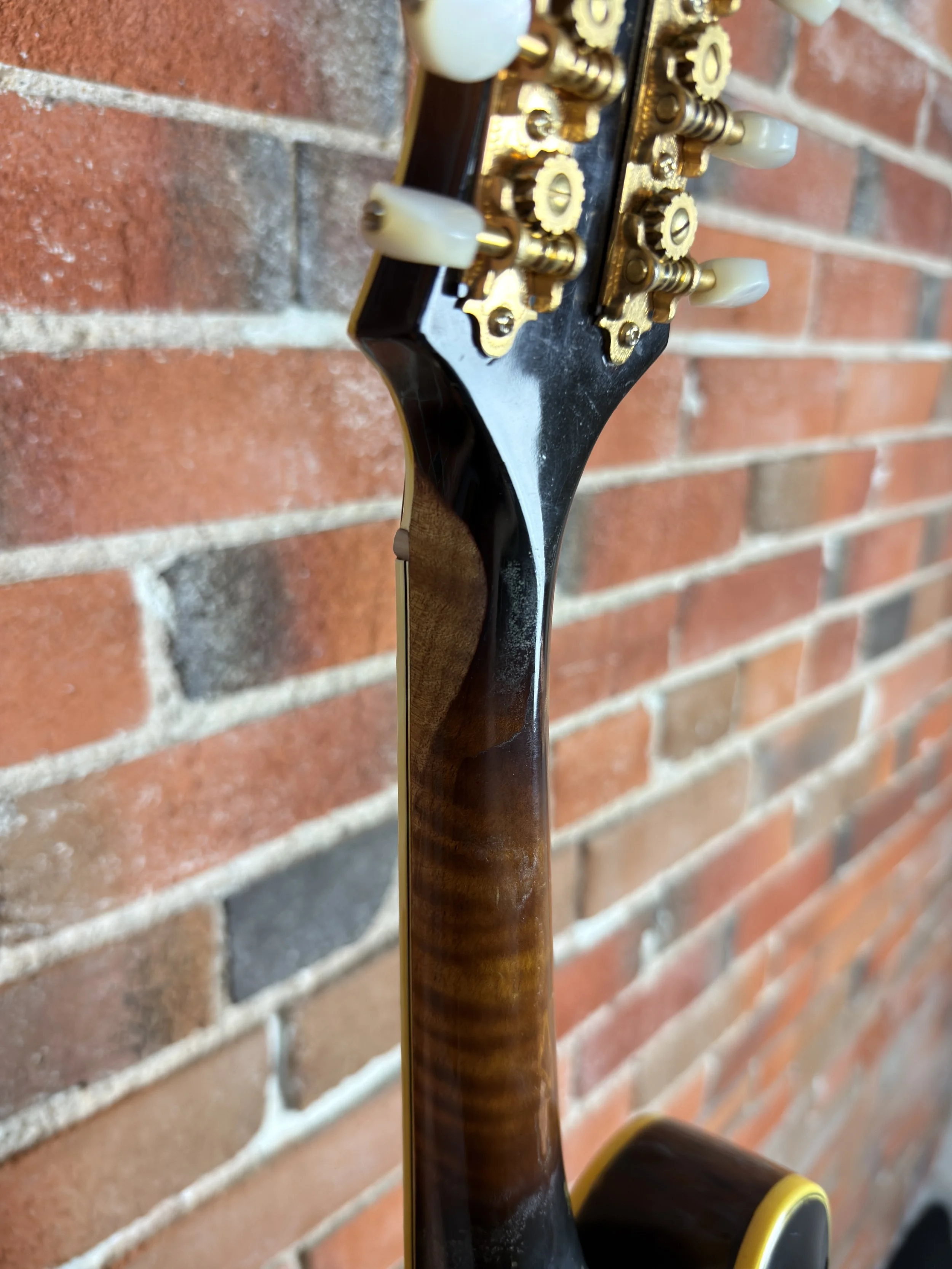1980 Gibson F5L (Herman Meints Signed)
1980 Gibson F5L (Herman Meints Signed)
Made just two years after the F5 was reintroduced in its “Master Model” form at the 1978 NAMM show, the brainchild of notable builder and historian Roger Siminoff and egged on by Gibson Artist Relations man Bruce Bolen, this 1980 Gibson F5L is a good example of what the culmination of months of work and love from mandolin fans can result in.
This example, built (or at least signed) on August 19th, 1980 by Gibson luthier Herman Meints, in what would later become the Gibson Custom Shop, has a look that evokes the late 20’s lacquer finished Gibson Ferns, and the tonal heart and soul of a Gibson is undoubtedly there, thanks to the nice woofy punch this mandolin has.
Like its later F5L counterparts, this mandolin has a 1 1/8th pearl nut, which has essentially become standard on most mandolins despite its difference from the “golden era” Loar signed F5s, many of which had the much skinnier 1 1/16th.
The Sitka spruce top and Michigan maple back and sides, with usual dual binding, are in great shape for 45 years old, with just a few dings here and there and the expected swirls, etc.
The neck finish has, at some point, begun to bubble, though it seems to be stable despite the look. There is also plenty of finish wear at the first position, most likely just from hand rubbing.
The frets are all present, no Florida scoop, and the neck angle, though low, still has left a decent bit of bridge adjustability left. There are signs of a previous neck separation and reglue, including an inlaid dot in the heel cap, presumably covering up a screw. The mortis and tenon style neck joints of this early era are known for being mobile over time, but this one has been fixed in place and doesn’t seem to be going anywhere soon.
The finish over the Fern inlay has a fair amount of checking, as to be expected, and the lower bout point cap has been rebuilt, as the original disintegrated years ago. The tuners are Loar spec replacements.
Playability wise, this instrument is in tip top shape, with nice low action, a comfortable, relatively small neck profile, and plenty of the original (tiny) frets left.
Comes with the original square hardshell case replete with 80’s Gibson block logo.



